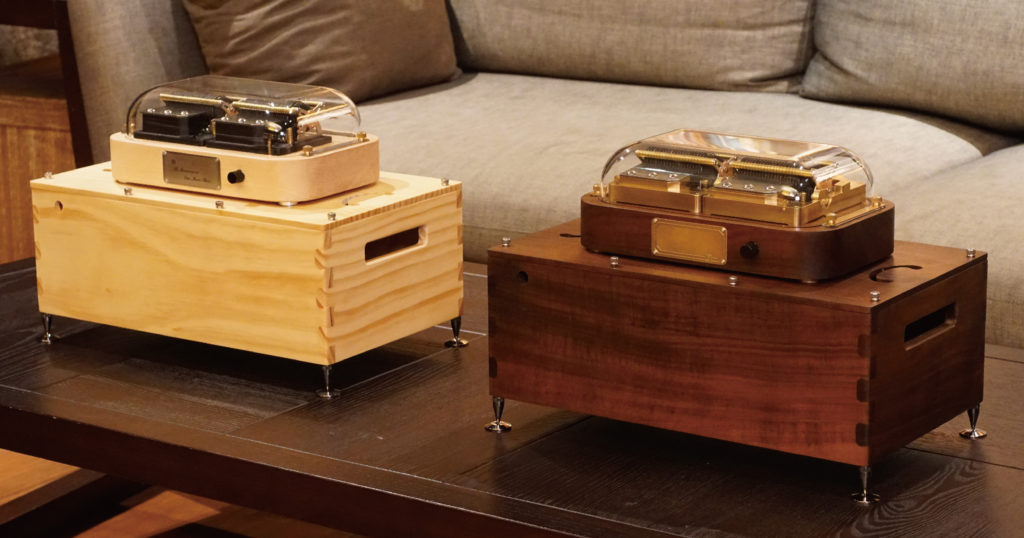The Design Journey of the Wooden Case and Resonance Box of Muro Box Music Box
Is a Music Box a Musical Instrument?
The sound of a music box is not necessarily important
For most people, a music box serves as a vessel for memories, akin to the classic imagery of a carousel or a ballerina—simple and beautiful. In this context, the outer case of the music box can be a jewelry box, a ceramic doll, or even just a cardboard box. Discussing the quality of sound in such a situation is meaningless; as long as the music box has an exquisite and creative appearance, and the melody can evoke your memories, it is a good music box.
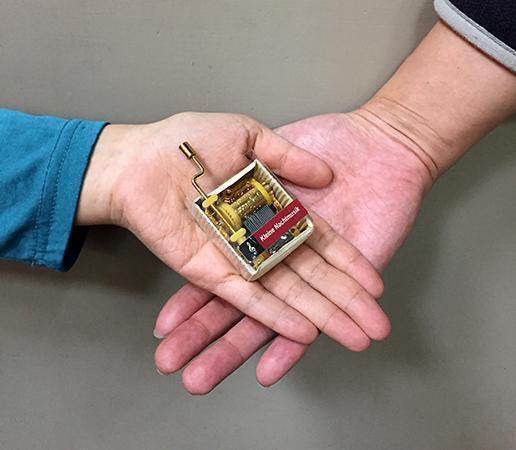

The Display Purpose of Music Boxes
For some people, music boxes are collectibles. Due to their display purpose, they may be placed in fully transparent glass cases or beautifully painted heavy wooden boxes. Some larger turntable music boxes are even housed in cabinets the size of a wardrobe. But are these luxurious decorations and heavy exteriors really designed to enhance the “sound”?
No One Has Ever Viewed a Music Box as an Instrument
he Muro Box allows for free arrangement, enabling the music box to be used like an instrument. This has been the dream of many musicians, but it has never been realized until now. In my view, the aspect of using music boxes as instruments remains an unexplored territory.
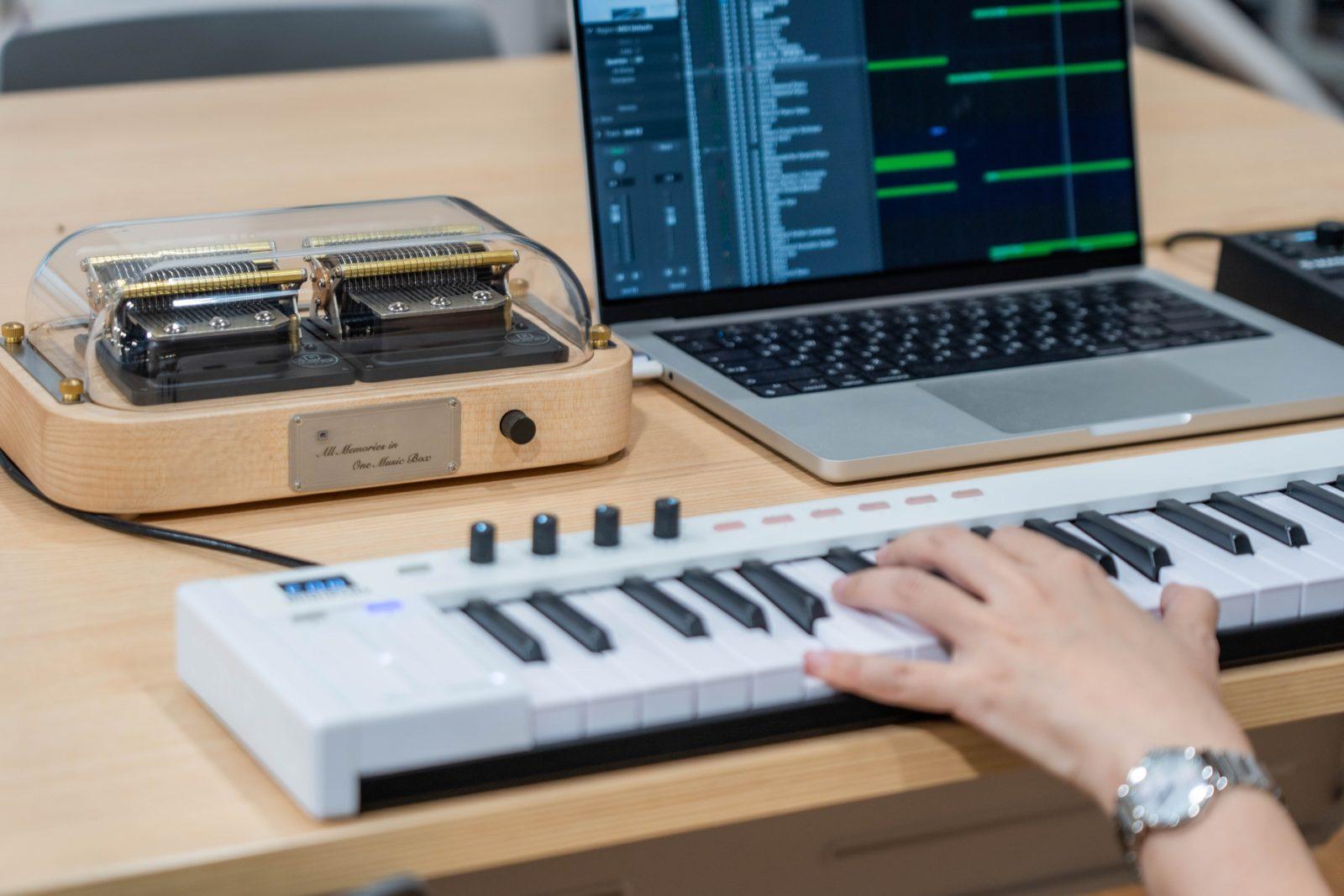
Does the Outer Case Have to Be Made of Wood?
The creative possibilities for the music box's outer case are endless
We often receive various inquiries about the materials used for music boxes, such as why we don’t use plastic to reduce costs, why we don’t use metal casings like those found in speakers, and why we don’t use glass like in crystal music boxes/xylophones, among other questions.
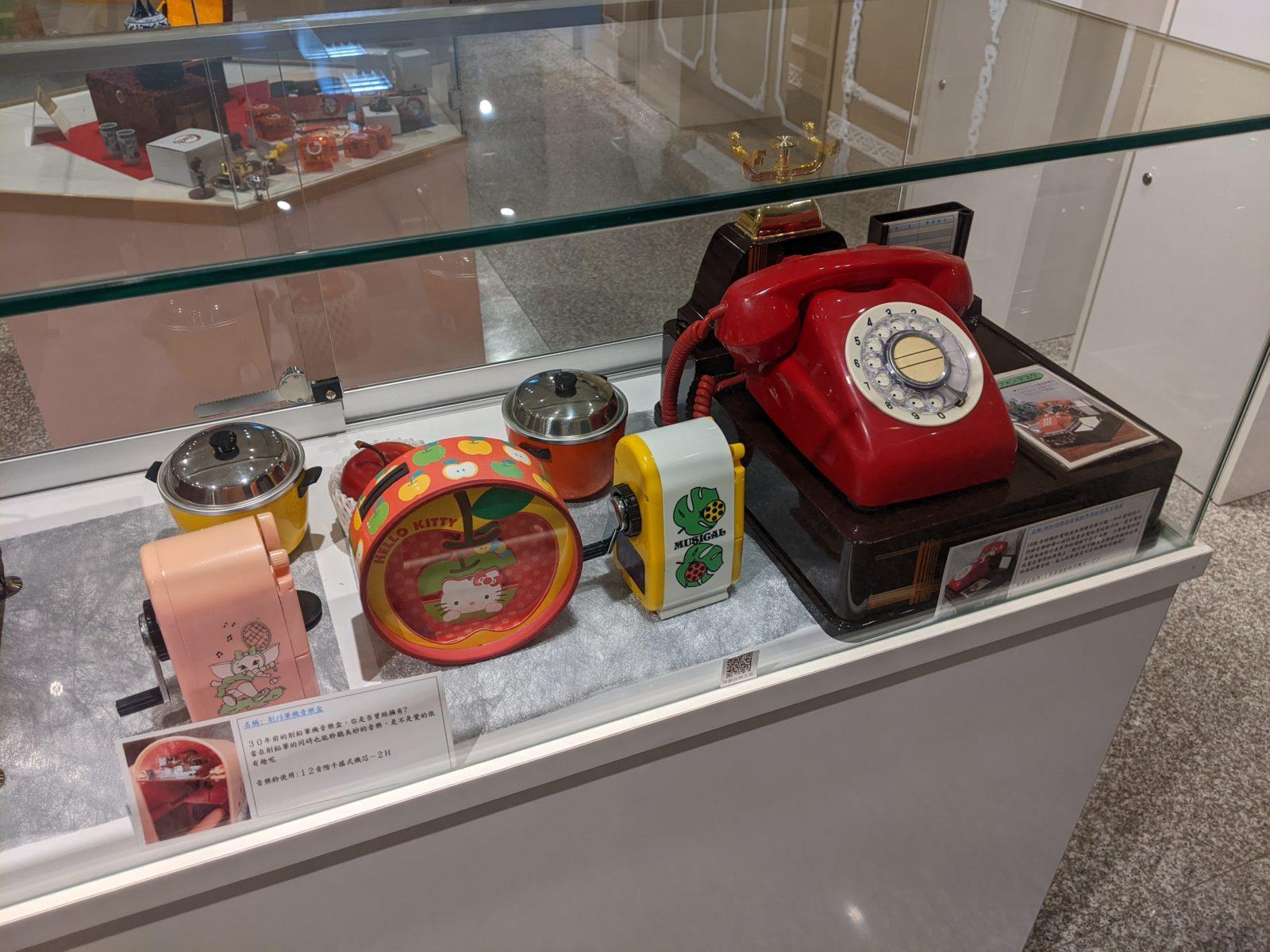
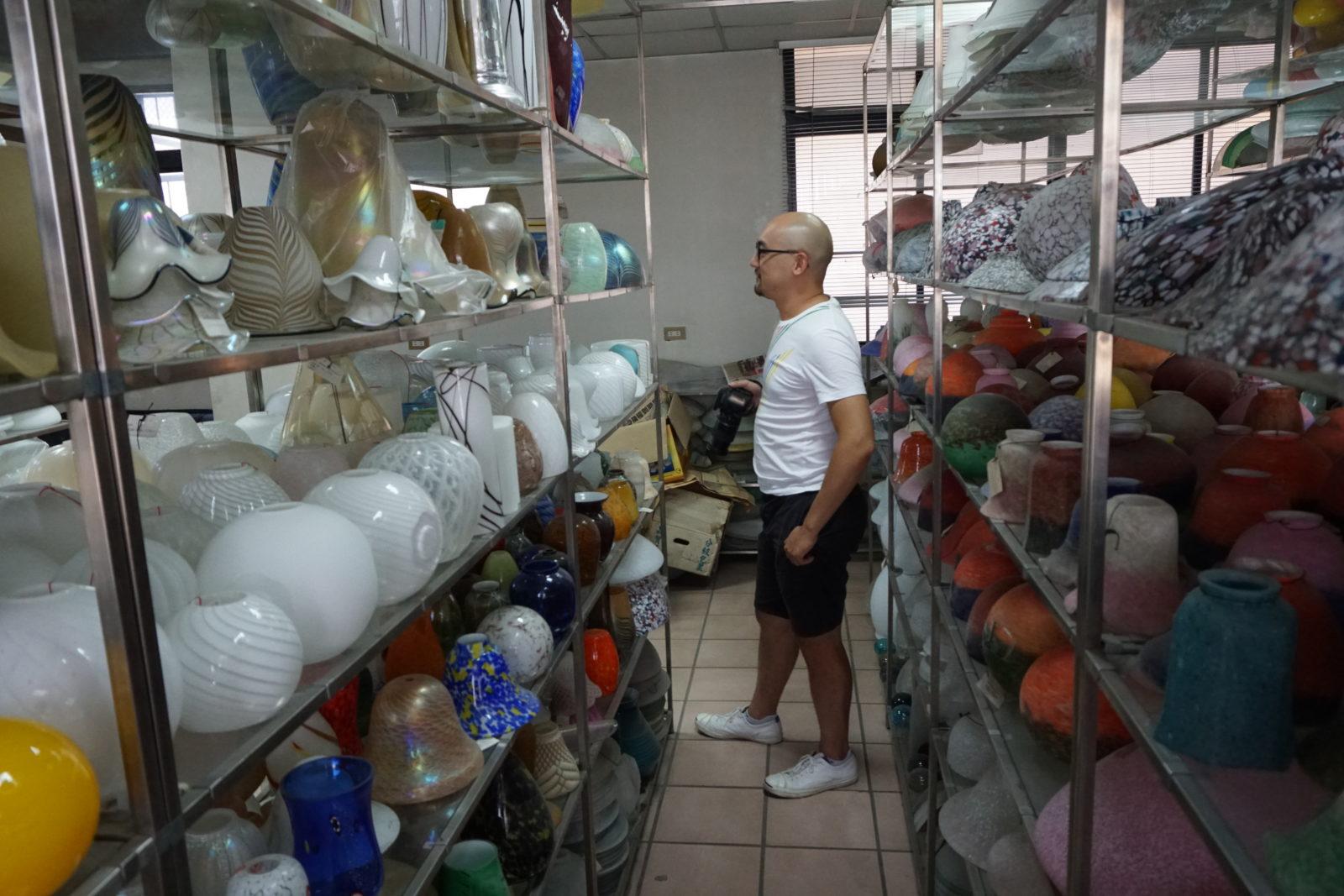
We have actually considered various possible materials
So why does Muro Box use a wooden case? Aren’t metal and glass instruments also quite common? We have visited suppliers of ceramics and glass, as well as manufacturers of audio equipment, and we seriously considered using materials other than wood. However, each material has its obvious drawbacks.
For example, metal has a sound characteristic that is too sharp, while high frequencies from plastic can be harsh. When I think about the likelihood of glass products being damaged during international shipping from Taiwan to the U.S., my mind just stops thinking in this direction.
So, does the outer case have to be made of wood? It doesn’t necessarily have to be. But wood is the direction that combines the least controversy regarding sound quality, is relatively easy to produce, and is relatively straightforward to implement.
Painful Lessons from Outsourced Design
The initial Muro Box design was executed through an external design firm, and based on the designer’s proposal, we chose a flying UFO shaped wooden box design.
This turned out to be a painful lesson; while the shape was unique, the open-ended design of the wooden box did not effectively utilize acoustic principles at all. As a result, we were forced to discard the exterior design and start over. However, this experience also made us realize for the first time just how significantly the wooden box influences the sound of the music box.
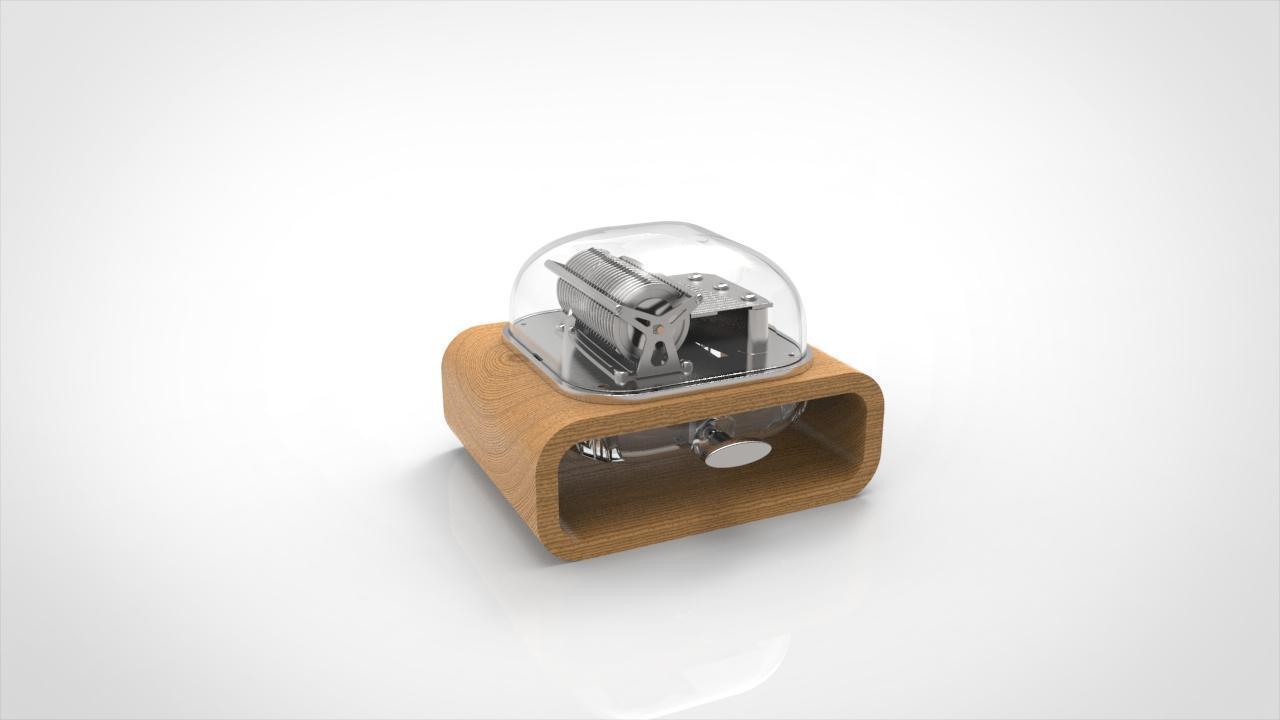
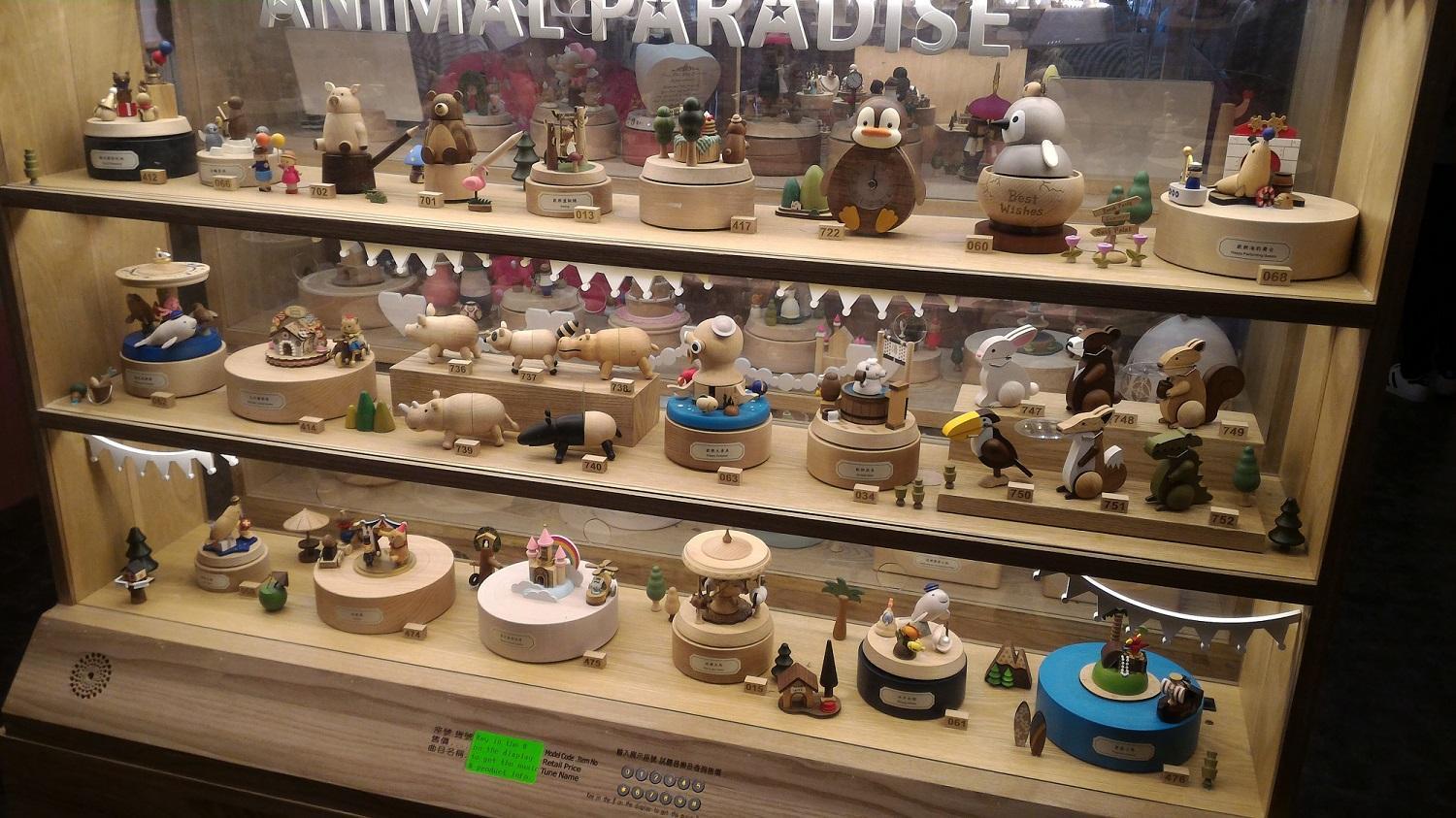
The Design of the Muro Box Wooden Case is Started from Imitation
However, at first, we did not fully understand the principles of sound production in music boxes. Therefore, the material and dimensions of the N20 wooden case were actually based on the wooden box design from the largest music box manufacturer on the market, Wooderfullife. At this time, we still had too many unresolved questions in our minds, such as:
1. Why use maple wood?
2. How do the dimensions of the wooden box affect the sound? Specifically, how do the height, area, and thickness of the box influence the sound?
3. Does the size and position of the sound holes have an impact?
The Principles of Music Boxes and Audio Equipment Are Different
We searched extensively across Taiwan’s related industries for possible answers, but received conflicting responses. However, after synthesizing the information, we at least understood that musical instruments and audio equipment have fundamentally different purposes.
The goal of audio equipment is to reproduce the original sound, and the design philosophy of its wooden box is to optimize the sound path in the air. Audio systems intentionally create small compartments or channels inside the speaker box to direct the sound through these pathways, amplifying certain frequencies while attenuating others to achieve the desired effect.
In contrast, the goal of musical instruments is to produce a unique sound, and the design philosophy of their wooden box is to bring out the characteristic tonal qualities of the wood itself. Since the sound of a music box comes from the vibration of the comb, which resonates through the wooden box, the answers we seek should come from the design principles of musical instruments, rather than the intuitive approach of audio equipment design.
The Evolution of the N20 Wooden Box Design Shows Our Learning Process
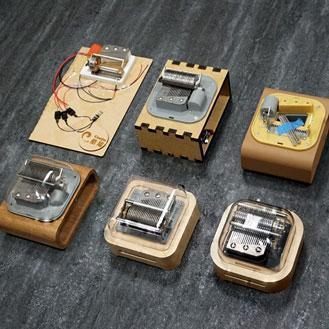
To better understand the key elements of instrument design, we visited craftsmen specializing in violins, ukuleles, and guitars, in an attempt to discover the critical aspects of designing wooden boxes for music boxes. These lessons and experiences have been gradually reflected in the design iterations of the N20 wooden box over time.
For example, we finally understood the reason for choosing maple wood. The sound characteristics of maple are actually clean and featureless (yes, featureless), which is why it’s not commonly used in the sound-producing parts of musical instruments. However, because maple is easy to obtain, has a low defect rate in its grain, and is hard enough to resist dents from impact, it is more commonly used in furniture or decorative items. It turns out that maple was chosen simply because it’s easier to process during production!
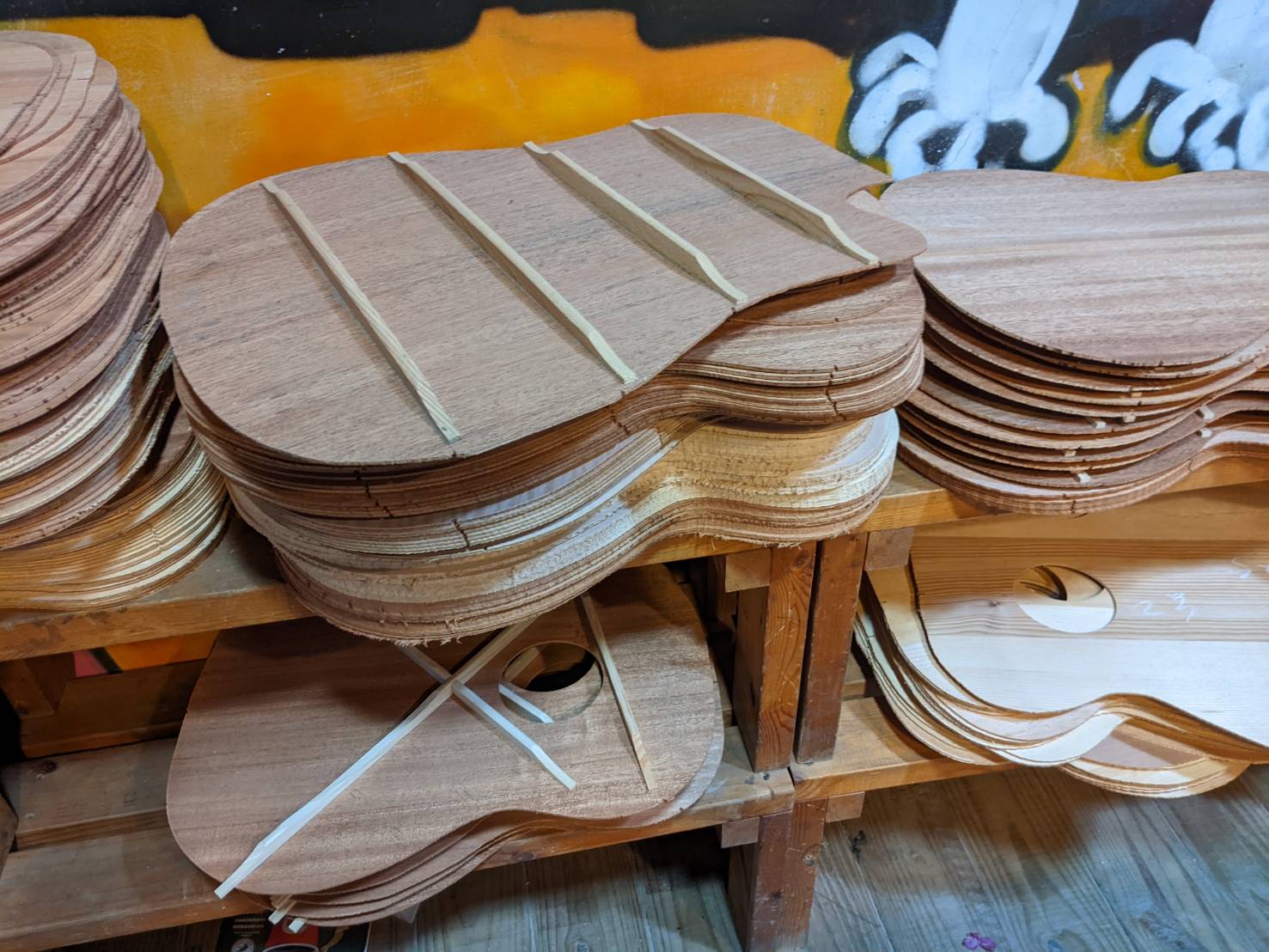
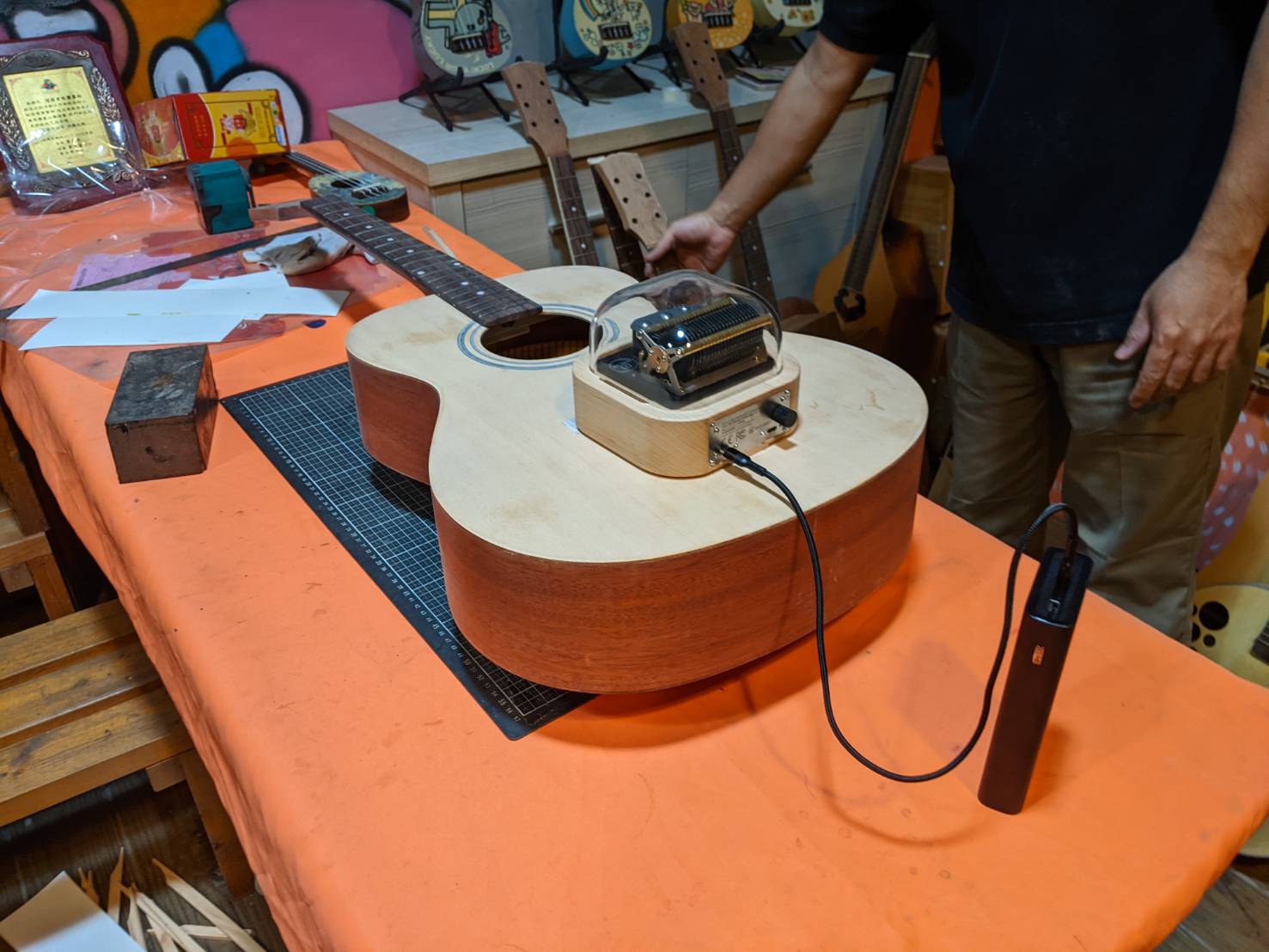
We visited a guitar production factory in an attempt to understand the key factors influencing the sound of the guitar’s sound box. After the guitar craftsman explained the role and placement of the sound hole, we moved the sound hole to the top, aligning it with the direction of the comb’s vibration. Following the violin maker’s explanation of the violin beam design, we tried adding beams and posts to the wooden box in the N20 model of music box when introducing it on our Indiegogo N20 campaign.
There were also many failed adjustments, such as our constant tweaking of the wooden box’s height and wall thickness, which were later proven ineffective. However, this learning process with experienced craftsmen gradually helped us accumulate the knowledge and energy needed for the future design of the N40.
The Turning Point for Designing with a Focus on Instruments
After many years of slow, independent exploration, we finally made a breakthrough with the assistance of the Industrial Technology Research Institute (ITRI). By chance, Dr. Huai-En Chen from ITRI learned about our music box and introduced us to Mr. Yu Chih-Kuan (Captain Yu), a master of the kalimba (thumb piano). Mr. Yu told us that, when he was younger, he gave up on his dream of creating an interchangeable-tune music box and turned to making kalimbas instead. Because of this, he was very willing to help us with the design of the wooden box.
It was at this point that I finally realized the instrument we should be emulating isn’t the common string instruments, but the Kalimba.

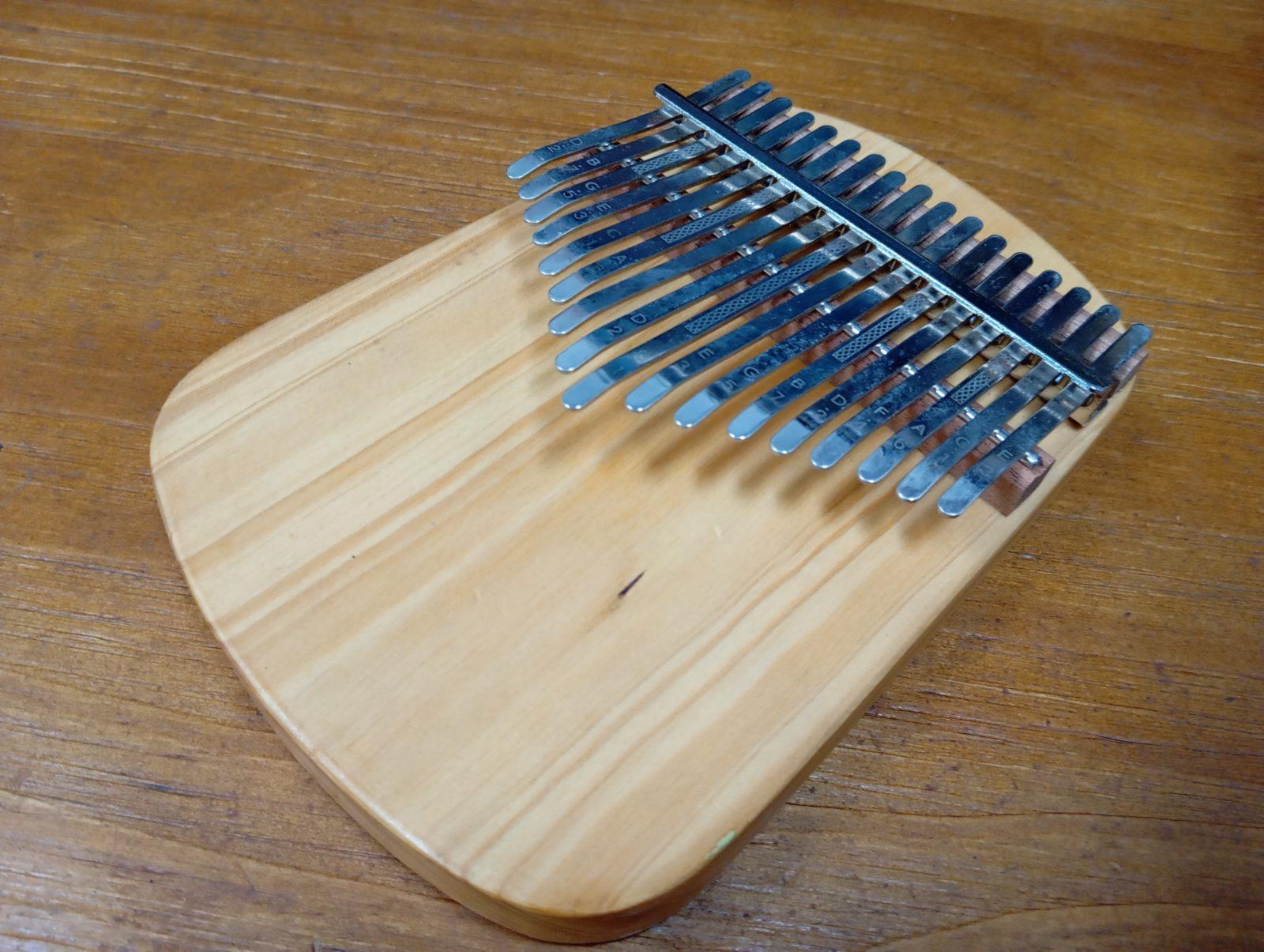
The Instrument Most Similar to the Music Box is the Kalimba
Since the principle of the music box is that the pins on the cylinder pluck the comb (metal tines) to produce sound, it technically belongs to the idiophone family of instruments, specifically the “lamellophones”. The most well-known example of this is the African kalimba. Unfortunately, this origin is not European, which doesn’t align with the music box’s development history that began in Europe.
In other words, if the goal is to design the music box as a musical instrument, we shouldn’t imitate common string instruments like the piano or guitar, nor should we compare it to existing Western instruments, as there’s no standard of good or bad. The best approach is to treat the music box as a completely new instrument. However, if we do want to optimize the sound quality, the most relevant instrument to reference would be the kalimba.
The N20 Resonance Box: A First Attempt with Instruments as the Goal
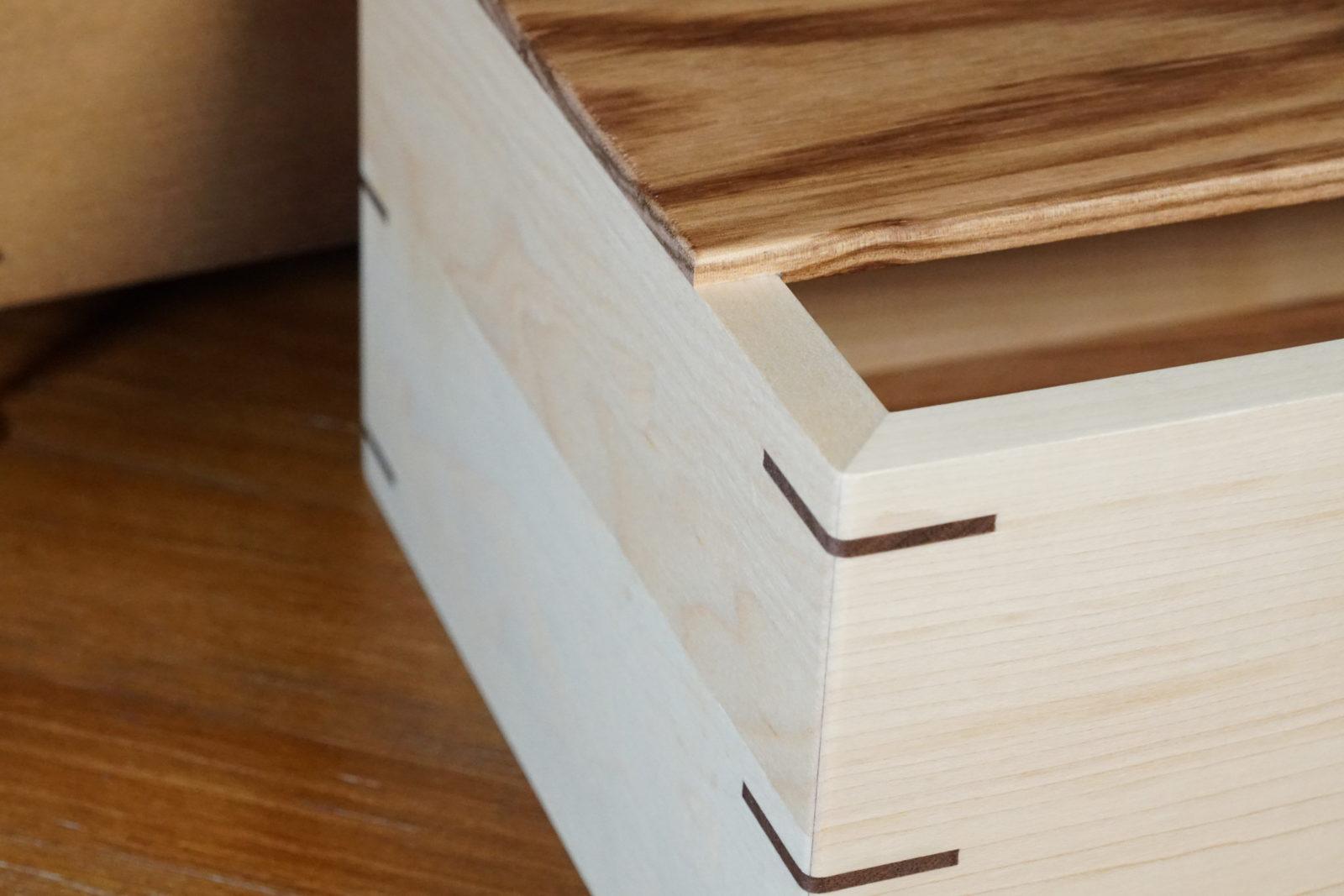
Since modifying the wooden box of the music box itself has a high threshold for changes, we decided to enhance the sound effect of the existing N20 music box by using an external resonance box.
For the materials, the top and bottom plates are made of African zebra wood, as suggested by Mr. Yu, because lamellophone instruments require high-density wood. However, we ultimately chose maple for the side walls of the box. The reason behind this choice is that zebra wood is not commonly found in Taiwan and is too expensive for us to obtain enough for mass production. In the end, we had to compromise for the sake of manufacturing.
As for the dimensions of the N20 resonance box, they were determined by Mr. Yu after multiple tests with handmade samples to achieve the best resonance effect. In particular, the height of the box and the thickness of the wooden panels are key to the resonance. These specifications were also carried over to the design of the N40 resonance box.
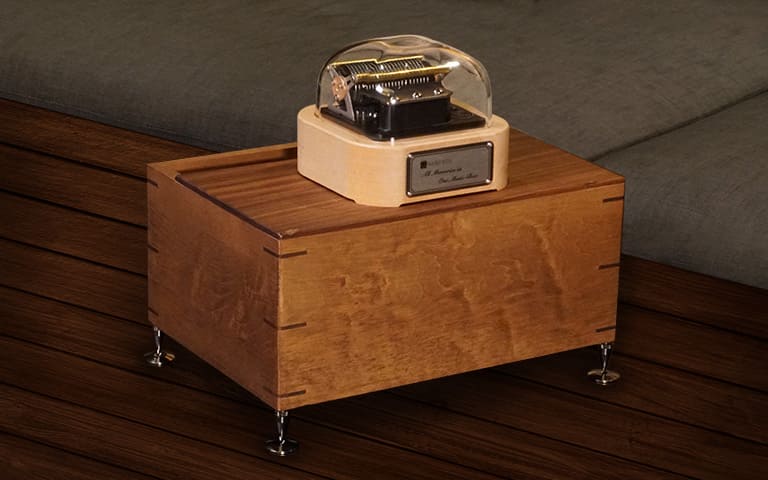
When the N40 music box was first being developed, there were actually many creative proposals for its wooden case
At first, our approach was to directly apply the experience from the N20 resonance box to the new N40 wooden case design. Simply put, the idea was to combine the N20 wooden case with its resonance box, essentially turning the resonance box into a larger wooden case for the music box.
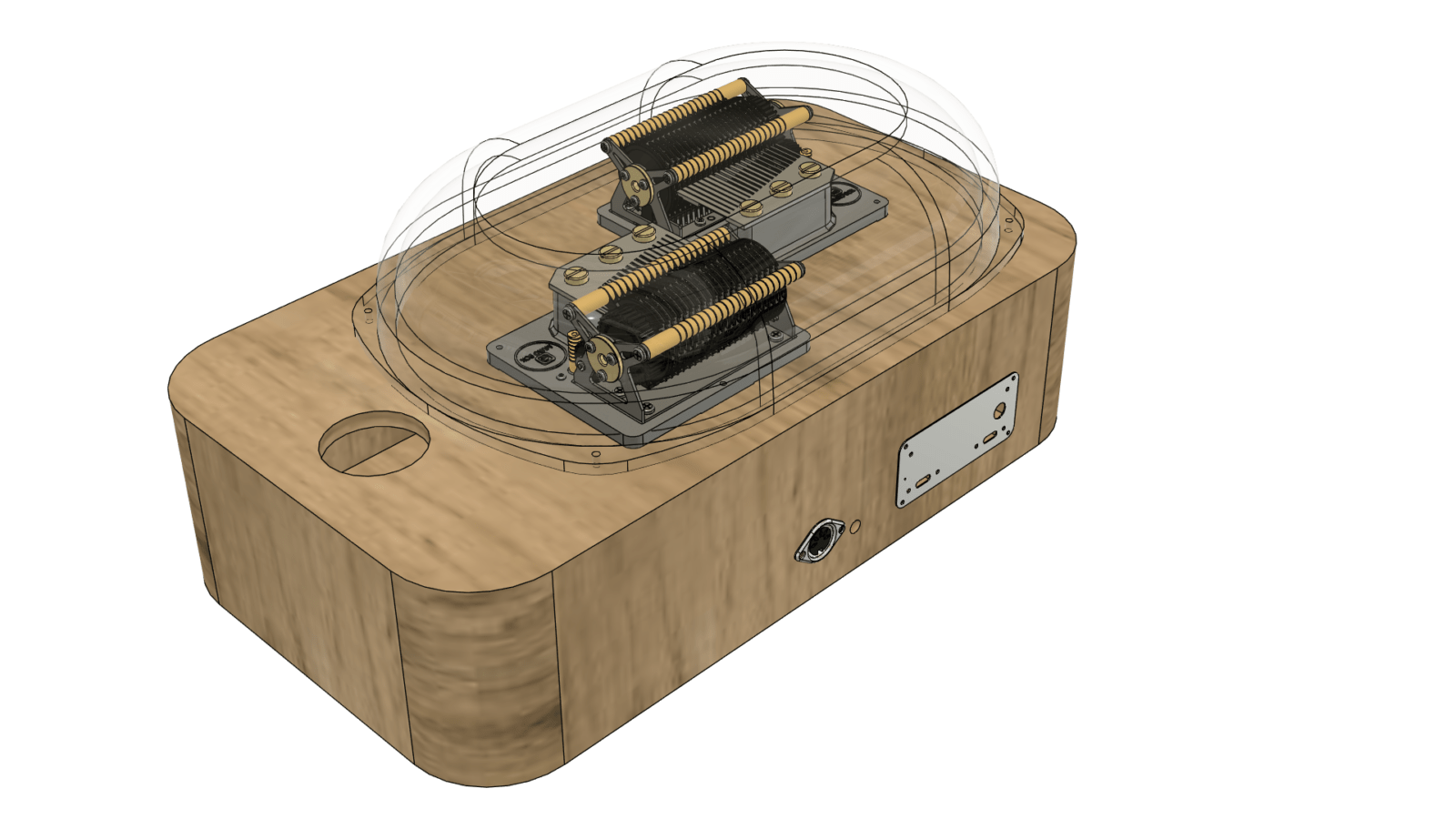
In the past, many customers have expressed that the appearance of our music box is too unconventional. Therefore, this time we considered changing the design to resemble a jewelry box, which aligns most people’s first impression with the traditional music box.
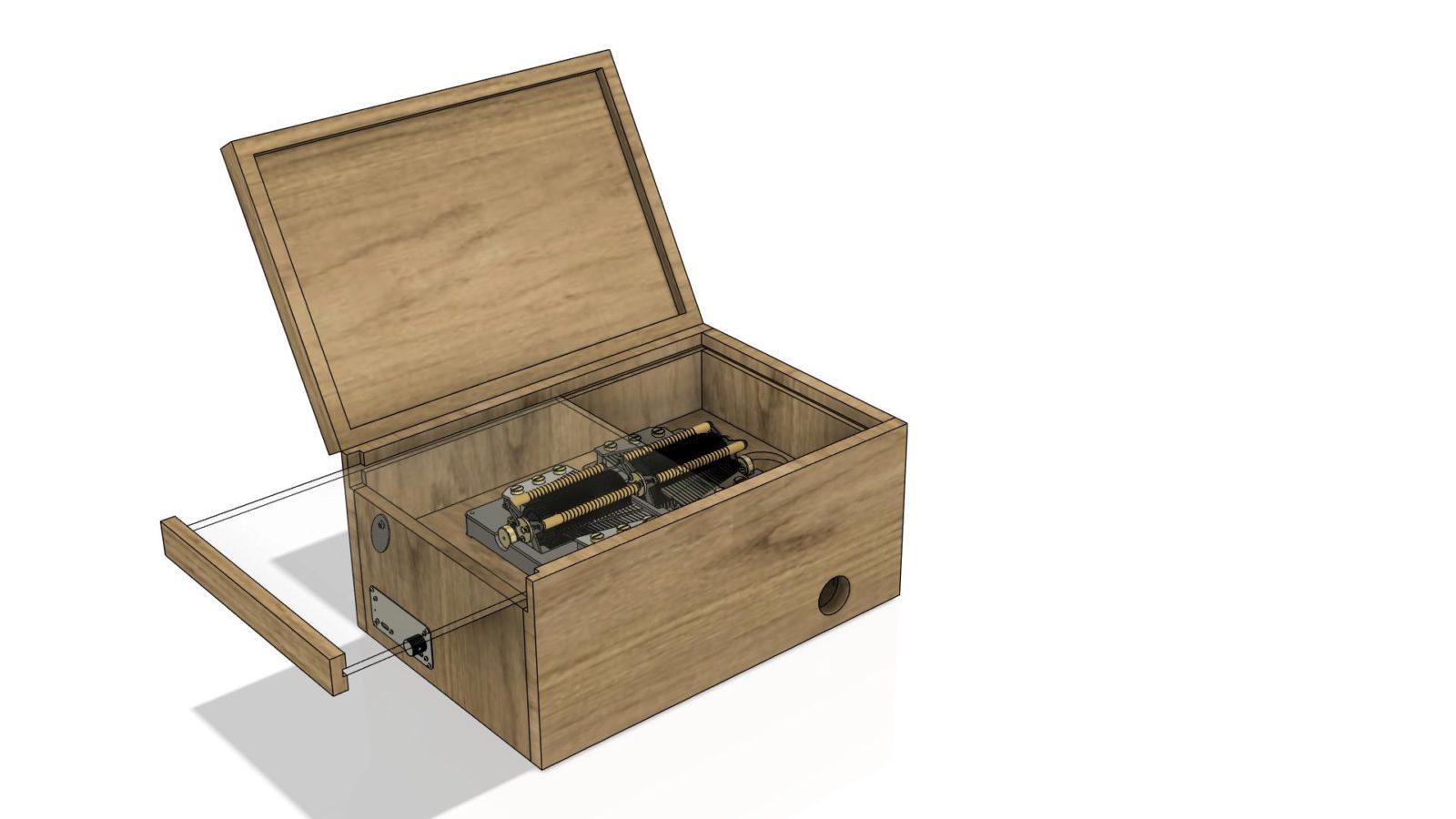
We also proposed a non-traditional design: integrating the music box into a sound box shaped like a guitar’s body. To explore this idea, we even visited Guanxian Guitar Workshop in Yunlin to investigate whether guitar sound box manufacturing techniques could be applied to our N40 model.
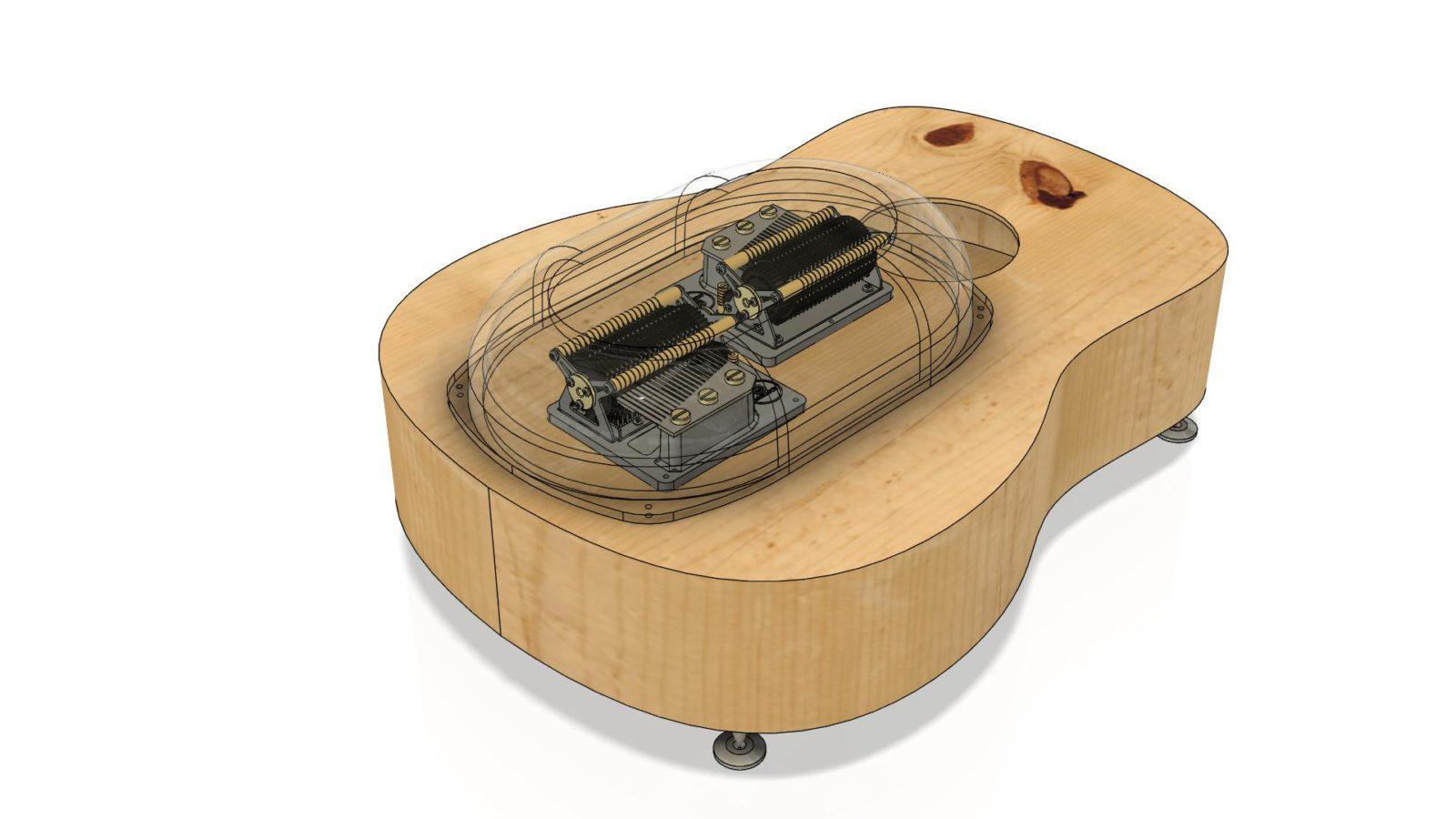
Let customers tell me how to design it?
The best design is one that meets the customer’s needs. Therefore, we sent out a questionnaire to customers waiting for the N40, asking for their input on the design of the wooden box. Here are some key customer suggestions that ultimately influenced our decisions:
1. Customers prefer to maintain the design theme of “square within a circle, circle within a square.” I initially thought most customers would want us to change to a classic jewelry box style, but many appreciate the current design as much as the innovative interchangeable feature.
2. Customers do not want the music box directly integrated with instruments. They understand the distinction between music boxes and other instruments and oppose the idea of combining them with guitars. While pursuing better sound is essential, it doesn’t mean we need to confine the music box to a specific instrument’s design.
3. There are industry standards for the design of the wooden boxes of music boxes. We are grateful to Mr. Siegfried for providing relevant design documents, which informed us of the design guidelines in the music box industry. For example, we followed the general principles regarding the assembly method of the base, the thickness of the wooden box, and the design of the sound holes.
The N40 Resonance Box Design: Back to the Original Intention
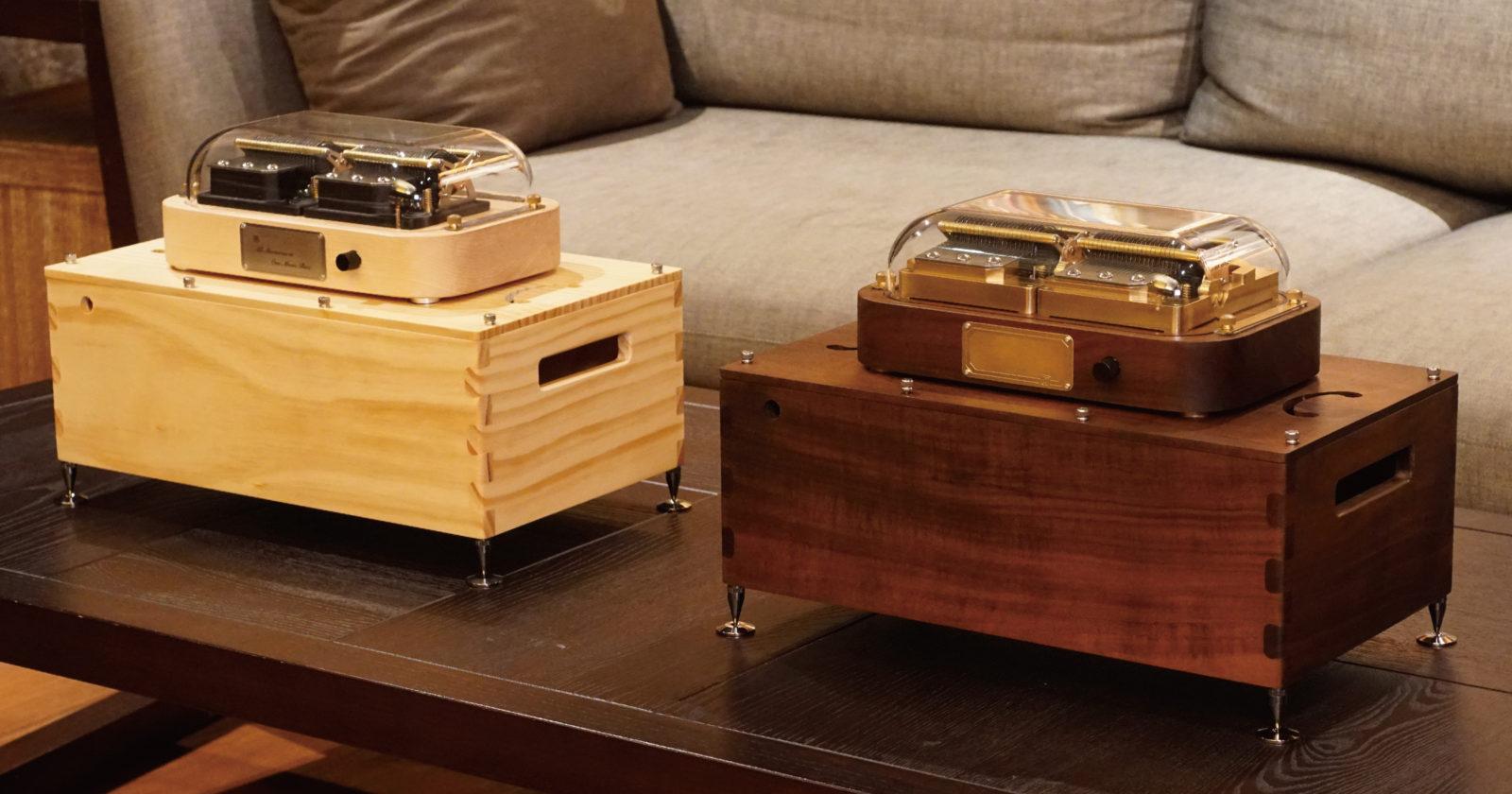
Therefore, after consolidating all the suggestions, we have made a relatively conservative decision. We will maintain the stable wooden box design of the N20 music box and continue to use the external resonance box as a sound enhancement device.
It may seem that we haven’t made any changes, but this reflects the opinions of the majority of our customers, who believe we have made the best decision. The following are some noteworthy design details:
Why We Choose Acacia Wood
We have accepted Mr. Yu’s suggestion to use domestically sourced acacia wood instead of African zebra wood. Acacia wood has a higher hardness than zebra wood and carries a caramel-like aroma. The use of high-value acacia wood combined with handcrafted waxing elevates the music box to the status of a premium collectible.

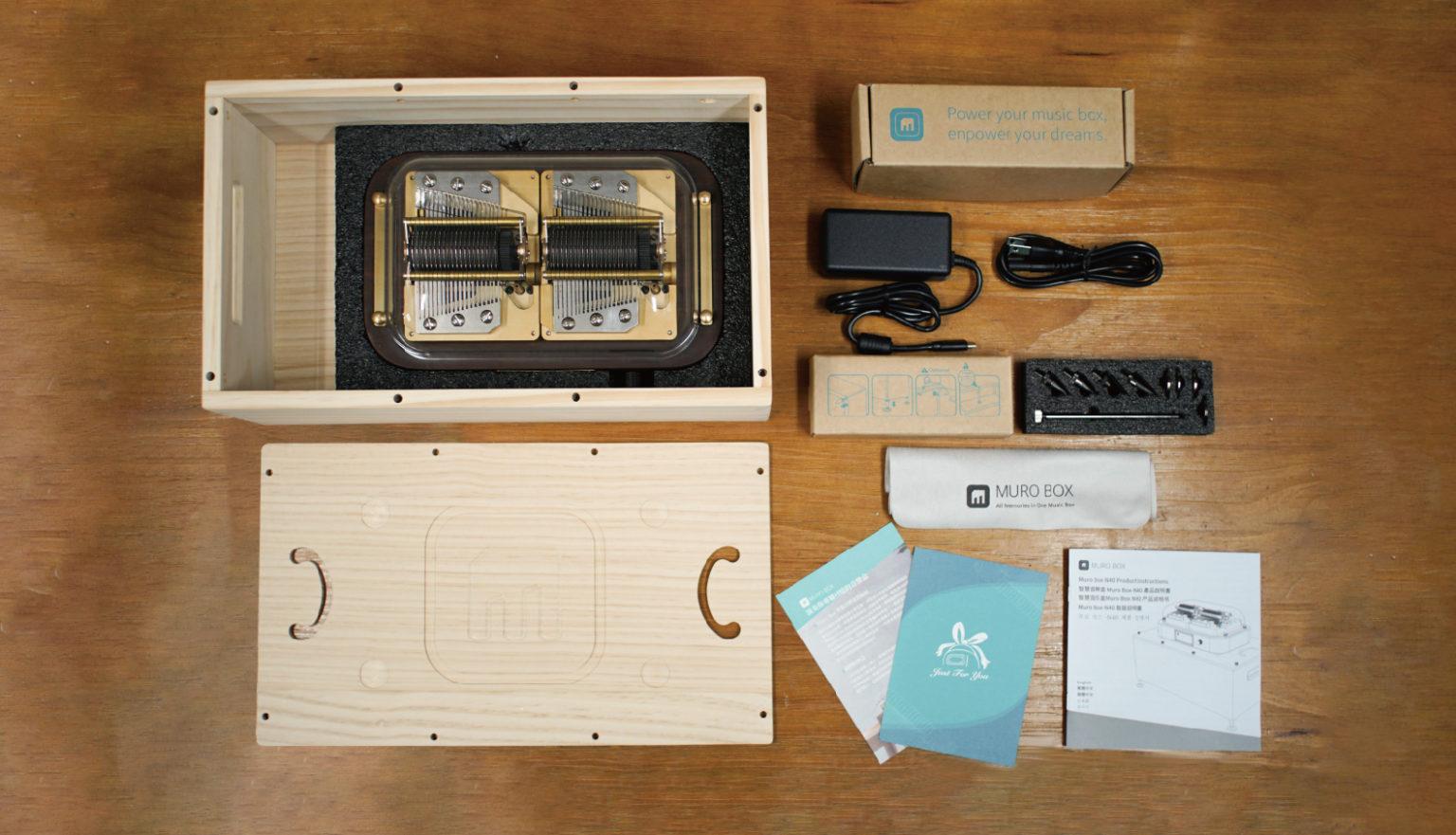
Designing the Resonance Box as the Shipping Container
In addition, we have adopted Mr. Yu’s suggestion to combine the resonance box with the music box. The music box will be placed inside the resonance box when not in use and can be taken out and placed on top of the resonance box when needed. This design allows the resonance box to also function as a shipping container to protect the music box, addressing the issue of excessive volume and high shipping costs.
Resonance Boxes Made of Various Woods
Although the maple wood used for the music box itself doesn’t produce a particularly special sound, we discovered that it is surprisingly well-suited for the separate resonance box design. Because maple wood transmits a clean sound, it allows the resonance box to fully showcase the characteristics of different woods. Therefore, we chose to continue using maple wood for the wooden box in the N40 standard, while also introducing resonance boxes made from various solid woods as options to enhance sustaining sound effects.
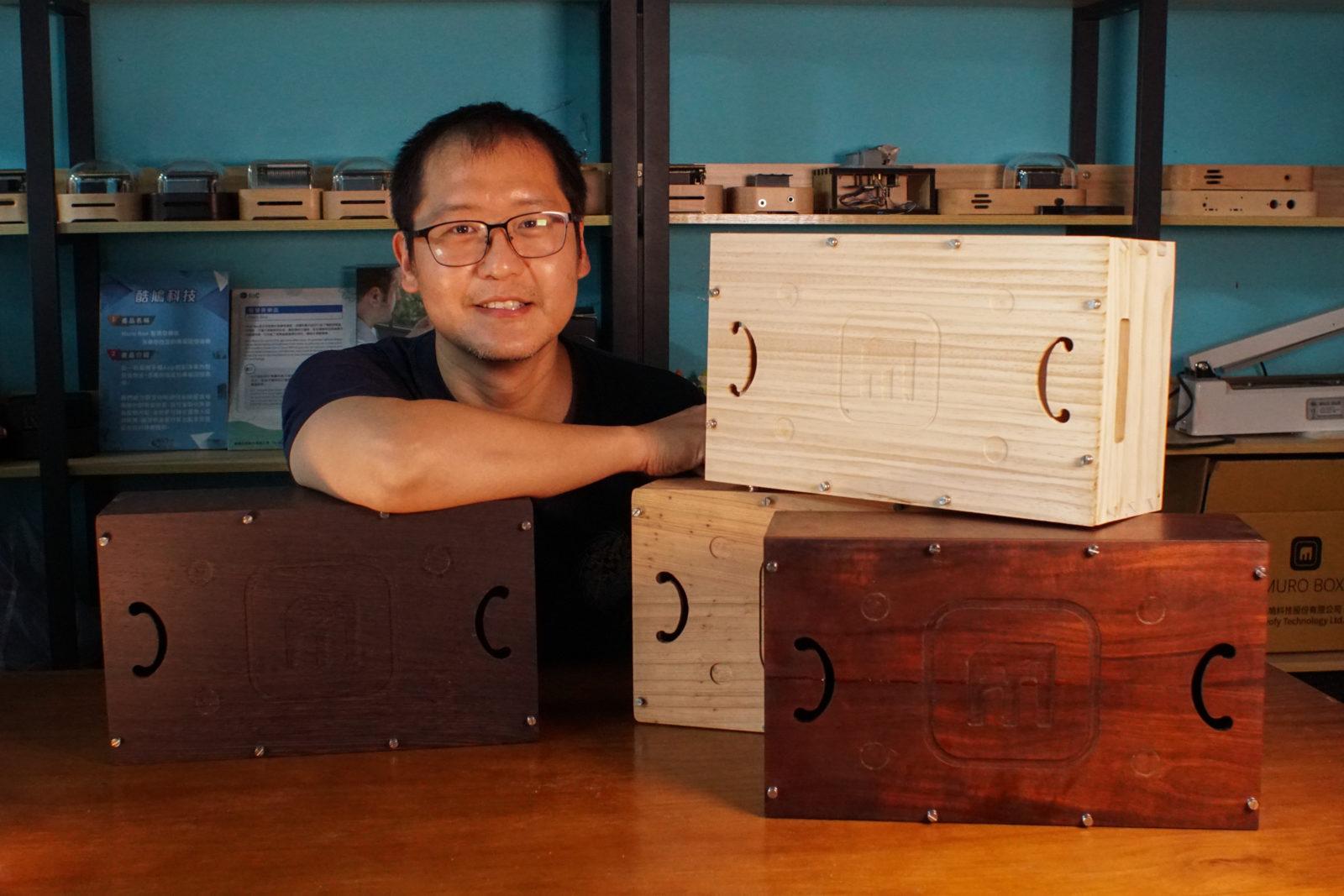
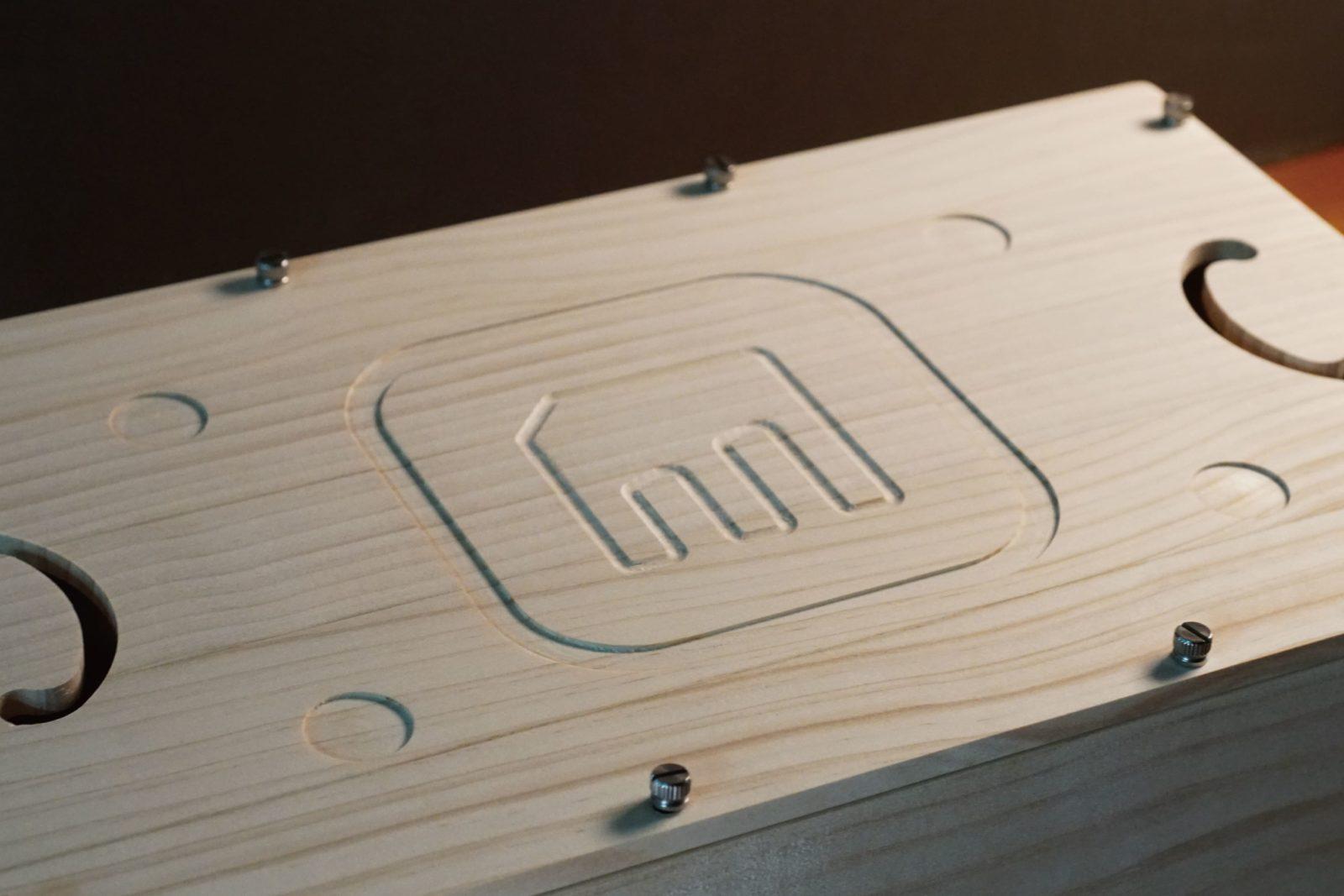
Design the C-Shaped Sound Hole
We adopted Mr. Siegfried’s suggestion and optimized the design of the sound holes on the top of the resonance box based on his research findings on violin design, using a C-shaped sound hole design. The sound holes on the sides were modified to a handle shape for easier carrying, which was recommended by the general manager of Kyooh.
Design a Sound Post
The resonance box mimics the design of a violin by adding a sound post. The sound post is not a necessary feature; its function is to enhance the load-bearing capacity of the resonance box. By using thinner wood panels, we can achieve the same strength. Without the sound post, the resonance box would need to be thicker and heavier, which is not practical for use.
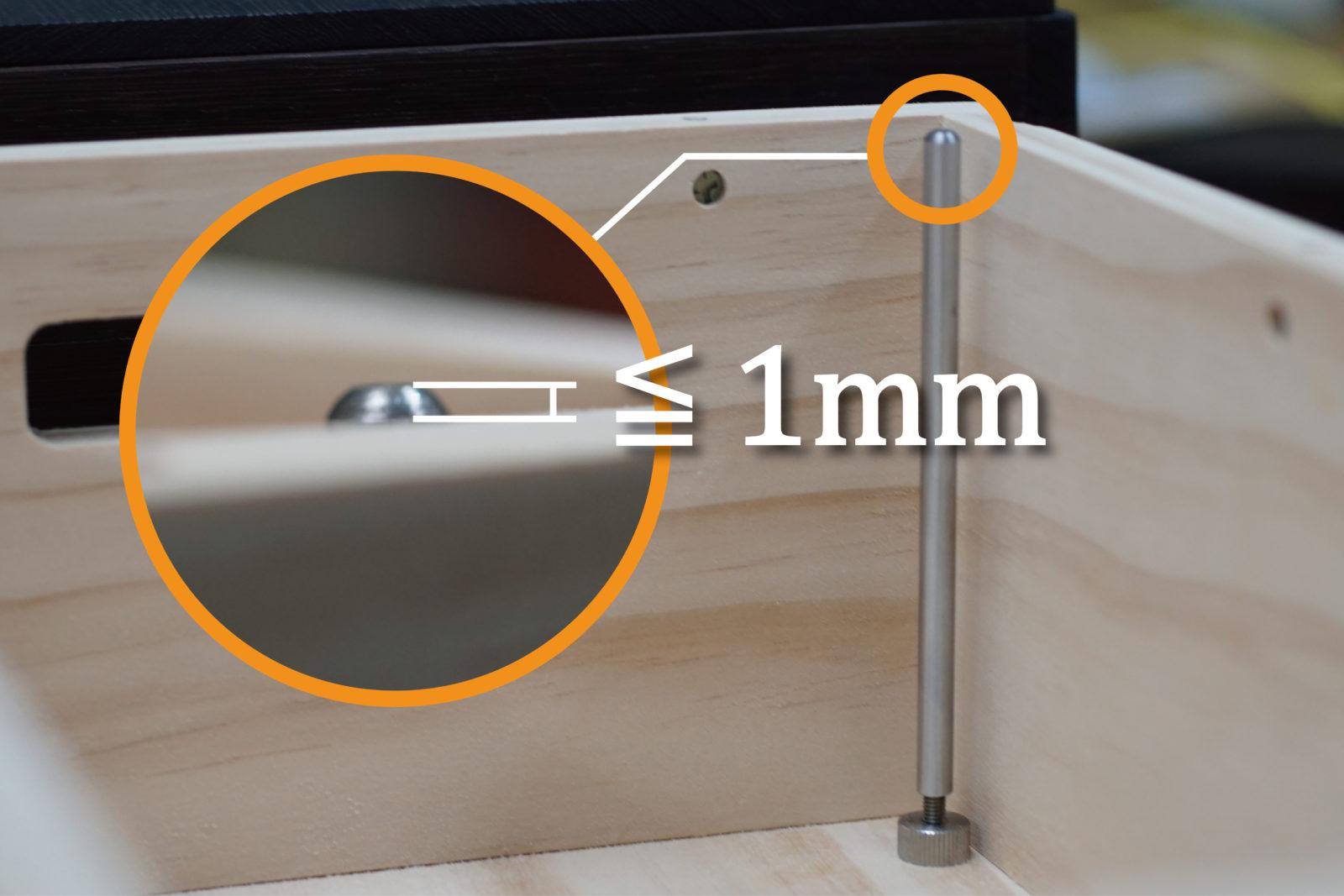
N40 Music Box and Resonance Box: The Result of Ten Years of Technological Accumulation
The design of the N40 wooden box and resonance box showcases our research achievements in music box design over the past decade. However, as all design decisions were made to enhance sound quality, the appearance may not yet meet everyone’s standards, and we are open to feedback. We sincerely hope that all customers, while enjoying the unique sound effects of the Muro Box, will also understand the design process that brought this product from concept to reality. Knowing the designer’s consideration behind your music box is the unique experience that our Muro Box brand offers.
